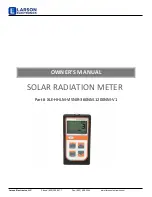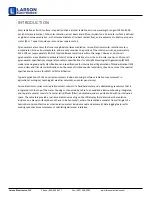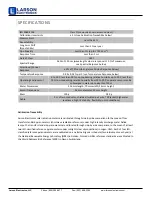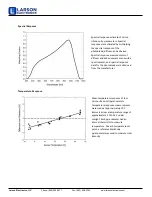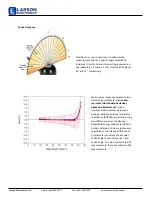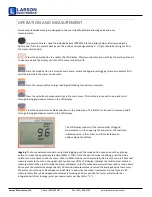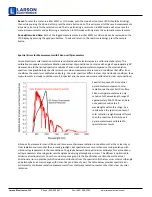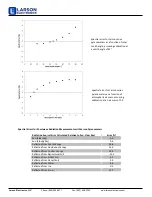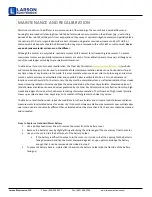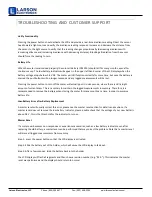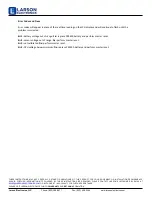
MAINTENANCE AND RECALIBRATION
Moisture or debris on the diffuser is a common cause of low readings. The sensor has a domed diffuser and
housing for improved self-cleaning from rainfall, but materials can accumulate on the diffuser (e.g., dust during
periods of low rainfall, salt deposits from evaporation of sea spray or sprinkler irrigation water) and partially block
the optical path. Dust or organic deposits are best removed using water or window cleaner and a soft cloth or
cotton swab. Salt deposits should be dissolved with vinegar and removed with a soft cloth or cotton swab. Never
use an abrasive material or cleaner on the diffuser.
Although
the
sensors are very stable, nominal accuracy drift is normal for all research-grade sensors. To ensure
maximum accuracy, we generally recommend sensors are sent in for recalibration every two years, although you
can often wait longer according to your particular tolerances.
To determine if your sensor needs recalibration, the Clear Sky Calculator (
) website
and/or smartphone app can be used to indicate the total shortwave radiation incident on a horizontal surface at
any time of day at any location in the world. It is most accurate when used near solar noon in spring and summer
months, where accuracy over multiple clear and unpolluted days is estimated to be ± 4 % in all climates and
locations around the world. For best accuracy, the sky must be completely clear, as reflected radiation from clouds
causes incoming radiation to increase above the value predicted by the clear sky calculator. Measured values of
total shortwave radiation can exceed values predicted by the Clear Sky Calculator due to reflection from thin, high
clouds and edges of clouds, which enhances incoming shortwave radiation. The influence of high clouds typically
shows up as spikes above clear sky values, not a constant offset greater than clear sky values.
To determine recalibration need, input site conditions into the calculator and compare total shortwave radiation
measurements to calculated values for a clear sky. If sensor shortwave radiation measurements over multiple days
near solar noon are consistently different than calculated values (by more than 6 %), the sensor should be cleaned
and re-leveled.
Steps to Replace a Handheld Meter Battery
1.
Use a phillips head screw driver to remove the screw from the battery cover.
2.
Remove the battery cover by slightly lifting and sliding the outer edge of the cover away from the meter.
3.
Use your thumb to slide the battery out of the battery holder.
a.
If the battery is difficult to move, turn the meter on its side so that the opening for the batter is
facing downward and tap the meter downward against an open palm to dislodge the battery
enough that it can be removed as described in step 3.
4.
To place the battery back in, simply slide it back into the battery holder with the flat side of the battery
facing up.
Larson Electronics, LLC
Phone: (800) 369-6671
Fax: (903) 498-3364
www.larsonelectronics.com

